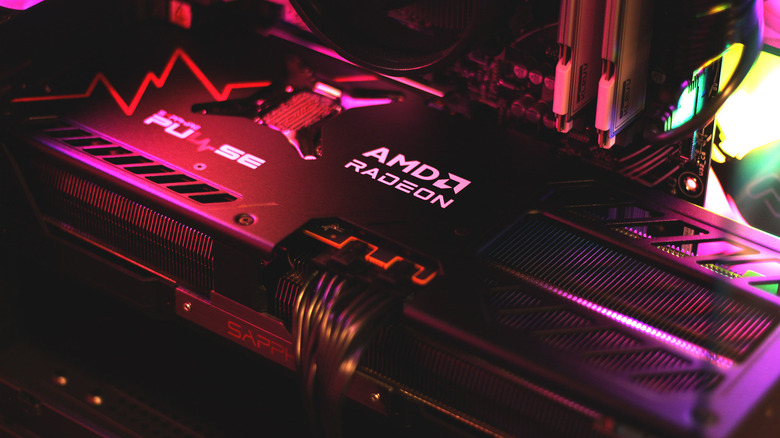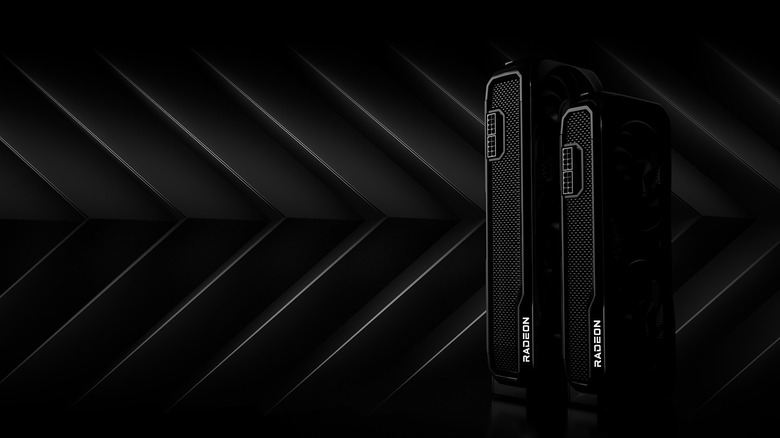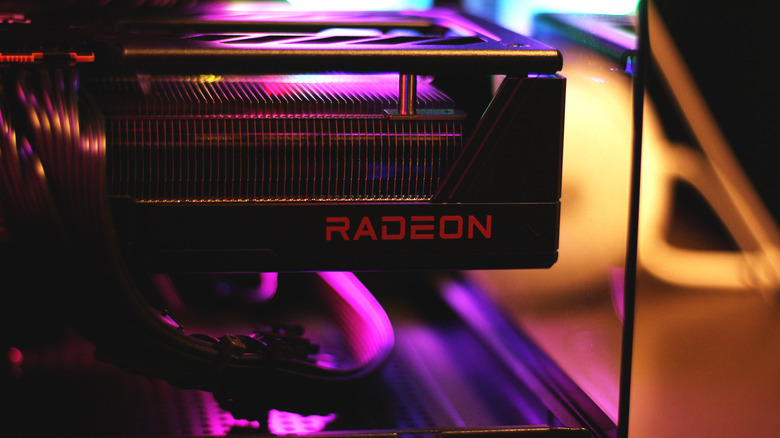The Best AMD Graphics Card For Gaming In 2025 (According To Users)
We may receive a commission on purchases made from links.
One of many important considerations before buying a gaming PC is scoping out the right parts for your build. Whether you're building it yourself, or ordering in a custom build, it's always helpful to know how different components affect the performance of a PC. When it comes to gaming PCs specifically, the GPU, or the Graphics Processing Unit, is the most essential piece that contributes directly to how well your computer can handle games.
There may be several major graphics card brands to choose from, but the bulk of these GPUs are manufactured by the two prominent names in the space — Nvidia and AMD. Though the former has had a spectacular run in the past decade, the latest RTX 50 series hasn't been received too well by enthusiasts, given Nvidia's reliance on promoting these cards based majorly on AI-based upscaling and frame generation technologies.
Besides, AMD has slowly but surely been making big improvements in its GPUs, and even offering them at comparatively more affordable rates than Nvidia. Simply put, if you're in the market to build a gaming PC in 2025, your options are no longer restricted to vendors that sell Nvidia GPUs. Some of the most powerful graphics cards you can buy come courtesy of Team Red, and the recently launched Radeon RX 9070 XT has become a crowd favorite. As a PC enthusiast and gamer at heart, here's how my experience with the Radeon RX 9070 XT makes it an easy recommendation for most.
AMD Radeon RX 9070 XT
Launched in March 2025, the Radeon RX 9070 XT is AMD's latest offering built on top of the RDNA 4 architecture. In real-world gaming performance, it rivals, and even exceeds in some cases the $749 Nvidia RTX 5070 Ti — all the while undercutting it at $599. This is, of course, assuming you can pick either of these cards at MSRP. The RX 9070 XT features 16GB of GDDR6 memory on a 256-bit memory bus, making it highly capable of 4K gaming — compared to the similarly priced RTX 5070 that only features 12GB of VRAM.
AMD is also offering the latest FSR 4 (FidelityFX Super Resolution) with the card, which brings forth better image quality compared to previous generations. I've found that using FSR and AMD Fluid Motion Frames in supported games like "Grand Theft Auto V Enhanced" adds noticeable performance gains without requiring you to dial down the graphics quality. That said, frame generation doesn't play well with many games, and can cause weird artifacting. Thankfully, the RX 9070 XT is plenty powerful to run any demanding title at high presets without fancy assists from AI upscaling or frame generation.
With 64 Computer Units (CUs), 4096 Stream Processors, and a boost clock speed of 2970 MHz, the Radeon RX 9070 XT is a highly capable card — which is made evident when you pay enthusiast forums and subreddits a visit. The graphics card has a 4.5-star rating across 9,000 reviews on Amazon, too.
Should you buy an AMD graphics card?
At its advertised MSRP of $599, the Radeon RX 9070 XT is an absolute no-brainer. It packs in enough performance to run AAA titles at 1440p and even 4K, and features AI-based upscaling and frame generation technologies that aren't as bad as they used to be. Unfortunately, thanks to scalpers and a rise in overall demand, it's fairly difficult to grab one at or around the price it was launched at. Amazon listings, for example, sell the RX 9070 XT for no less than $1,000. The same is also true for all Nvidia graphics cards — which at least helps make comparisons relatively even.
Another thing to keep in mind if you're going for Team Red is the fact that Nvidia still excels in Ray Tracing. The RX 9070 XT is fully capable of running games such as "Control" and "Cyberpunk 2077" at higher Ray Tracing presets, but the RTX 5070 Ti does push slightly more frames, which is evident thanks to detailed testing carried out by Tom's Hardware.
As someone who was reluctant to switch from Nvidia to AMD, I'm glad I picked the Radeon RX 9070 XT for my new build. Other options around the same price point were the RTX 5070 or 4070 Super — both of which are comparatively slower than AMD's offering. You also have the Radeon RX 9070 (non-XT) that can be picked up for less, which still packs in 16GB of VRAM.


